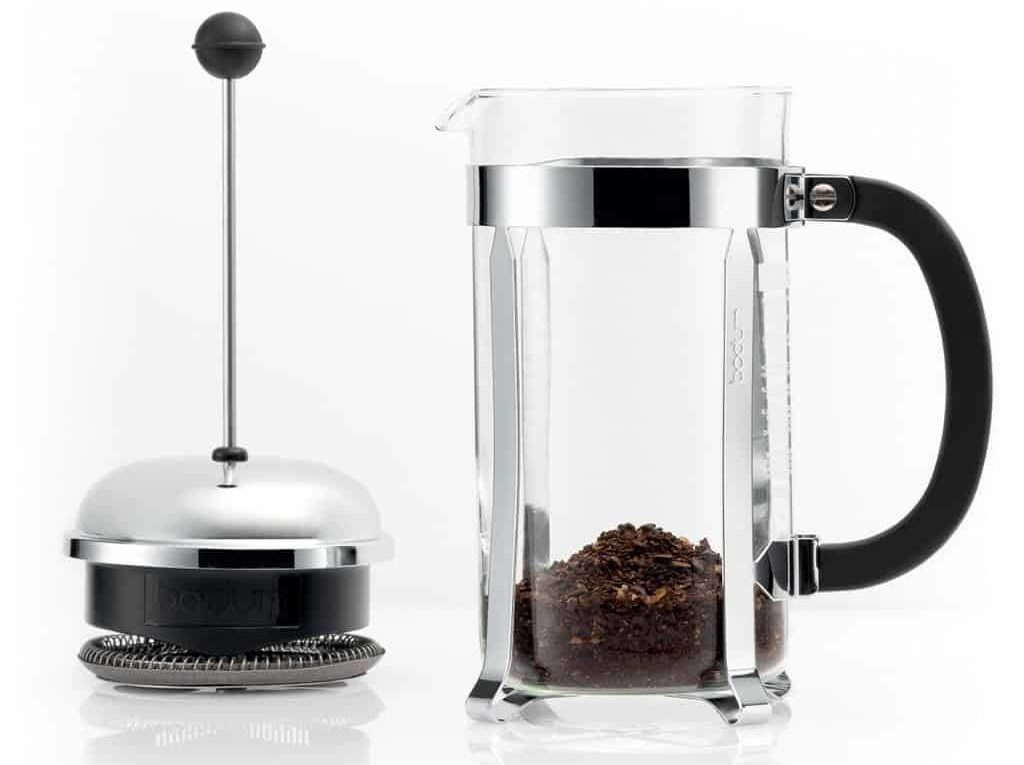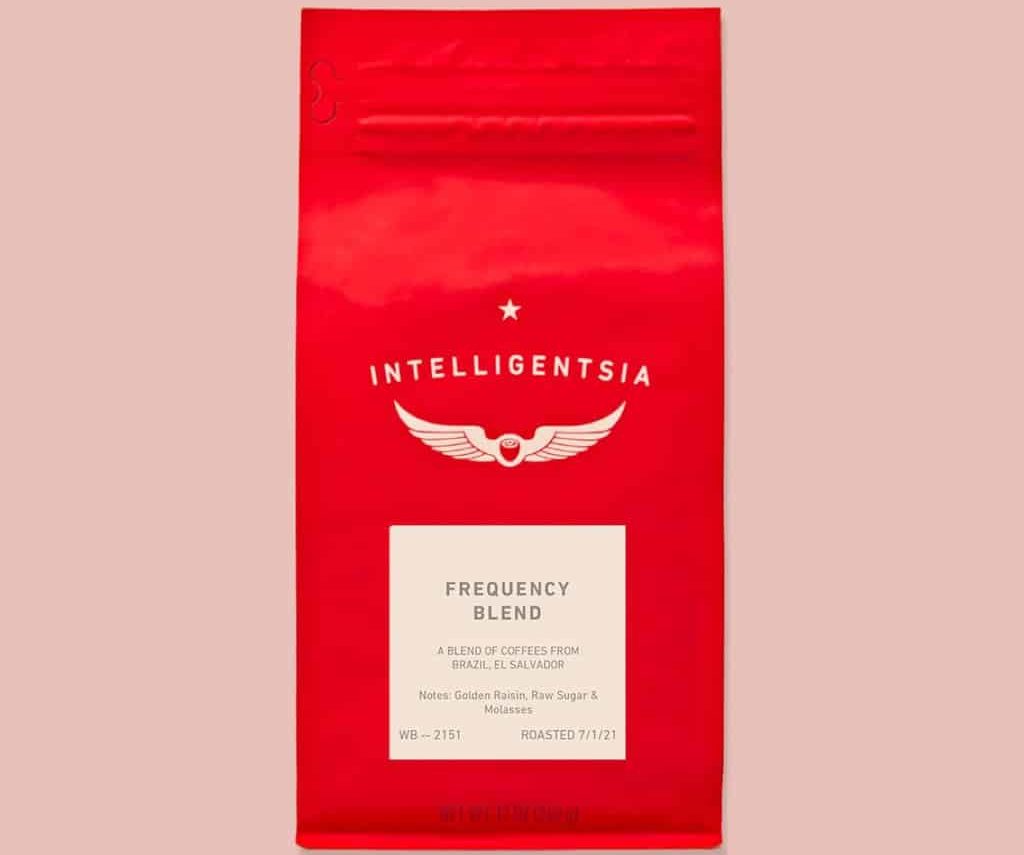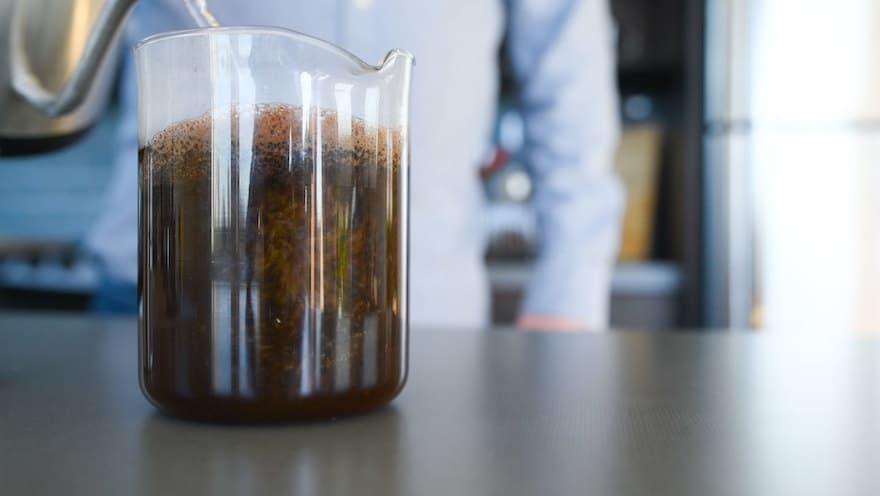French Press
I still remember the lunch that got me into French press coffee.
It was a counter-service place. We ordered a couple of sandwiches and two coffees. They said they’d bring it to our table, so we just hung around to wait for the coffees.
“Oh, we’ll bring that to your table too.”
We were expecting two cups of coffee. Instead, the server brought us a beautiful glass French press full of hot coffee, with two cups on the side.
French press coffee for two.
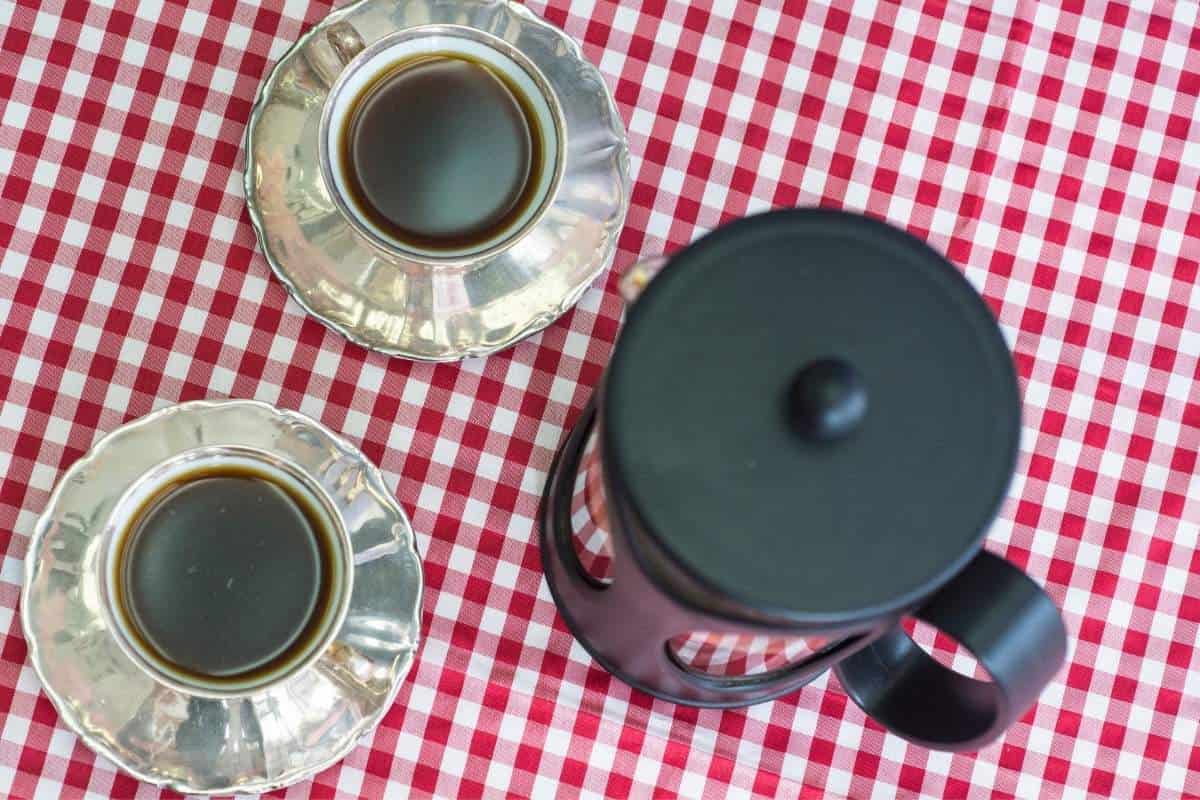
I held the plunger in place and poured out the coffee.
I took a sip.
This was not my usual lunch-hour coffee.
French press coffee is richer, more flavorful and nuanced than drip coffee. Because the coffee is filtered only by fine wire mesh, more of the coffee’s natural oils reach your cup. This creates a silky texture and extraordinary flavor.
The brewing method involves immersing coarsely ground coffee beans in a cylindrical carafe full of hot water and letting them steep to achieve extraction. This distinguishes it from other coffee brewing methods that extract by passing hot water through the grounds.
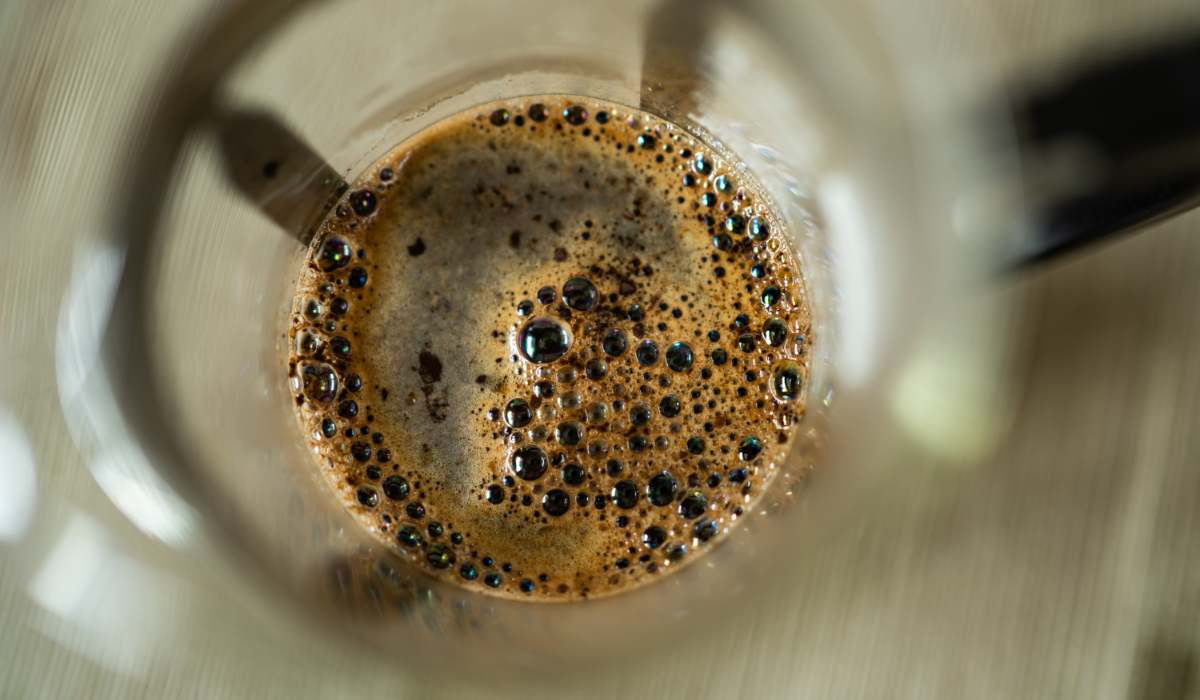
After brewing, the mesh filter is plunged through the coffee to force the grounds to the bottom and separate them from the coffee before pouring.
This wire mesh filter is the signature characteristic of most French presses.
The device itself is most commonly called a French press, but you might hear it referred to as a coffee press, a coffee plunger, a press pot, a cafetière or a cafetière à piston.
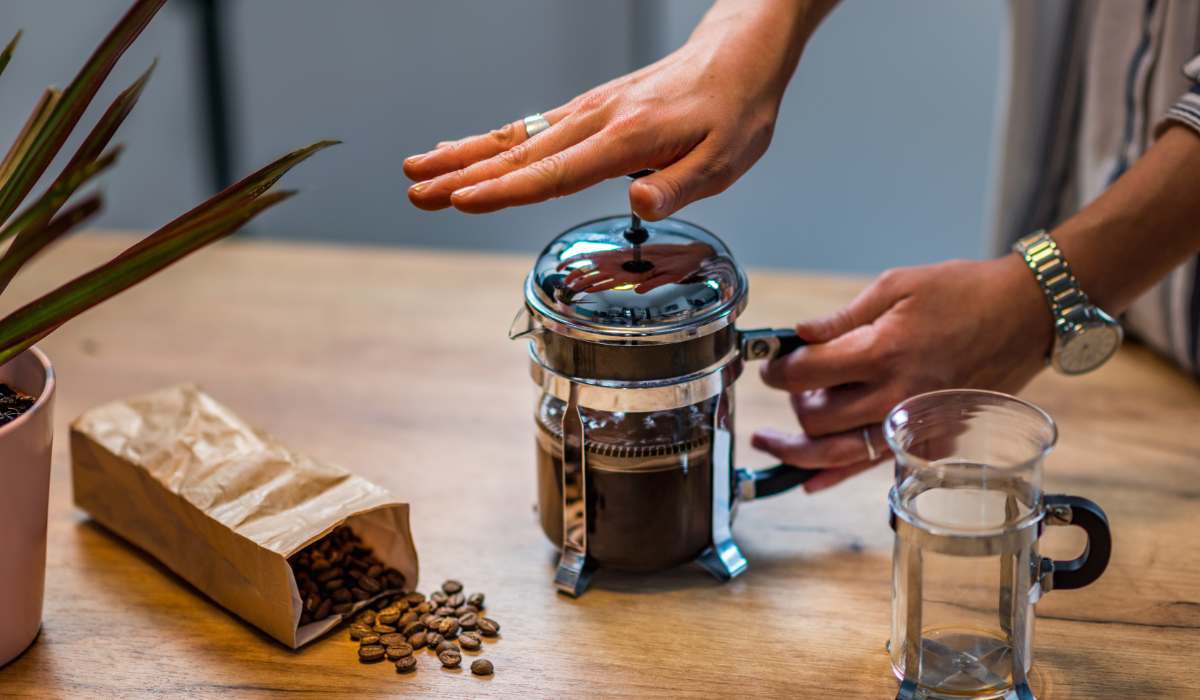
French press coffee has been around for well over 100 years. You might think it is France’s great contribution to coffee culture, but that is in dispute. Two Frenchmen published a design similar to the French press back in 1852, but there is little evidence that it caught on at that time.
The French press we know today more closely resembles a 1929 design by Italy’s Paolini Ugo, which he licensed to countrymen Attilio Calimani and Giulio Moneta who patented it.
In the 76 years between, French presses were undoubtedly being used, but whether those were French or Italian remains a debate.
How To Brew French Press
The method of making French press coffee is straightforward. The beauty of it is that you can adjust your recipe in quite a few ways to achieve the kind of coffee that’s tastiest to you.
We’ll go through our recommended step-by-step process, but we encourage you to figure out what you like and tweak everything until it tastes just right.
What You’ll Need
- A French press
- Coffee beans (or coarsely ground coffee)
- Coffee grinder (if the beans aren’t ground)
- Wooden spoon
- Water that’s just off the boil
Instructions
11 Steps for Perfect French Press Coffee
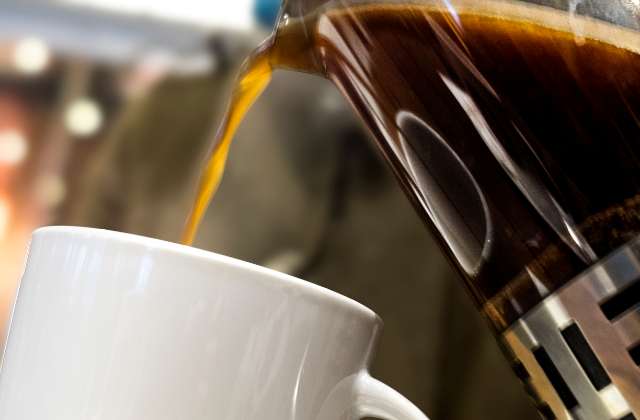
- Find a local coffee roaster, buy a bag of high-quality coffee beans to your taste, and have the beans coarsely ground by the coffee roaster (or invest in your own coffee grinder).
- The appropriate grind size for French press coffee.
- Rinse your French press inside and out with hot water. This will warm up the press.
- Measure your ground coffee. We recommend two tablespoons of coffee per five ounces of water. So if you have a 32-ounce French press that’s just over 12 tablespoons of coffee. But experiment with this.
- Set aside the lid, plunger and filter, and spoon your coffee grounds into the bottom of the carafe.
- Heat your water to 205 F (if you boil it and then remove it from the heat, it should be good after about a minute).
- Pour your water into the French press, covering the ground coffee, and fill it up about halfway. Set a timer for one minute and let it steep.
- After one minute, use a wooden spoon to give coffee grounds a gentle stir.
- Add more water to fill your French press and set the timer for three more minutes.
- Insert the plunger so the filter rests on the surface. Secure the lid in place at the top of the carafe. Do not press anything down yet. Let the coffee brew.
- After the three minutes are up, slowly push the press all the way down.
- Keep the plunger all the way at the bottom as you pour your freshly brewed coffee. Enjoy!
French Press Essentials
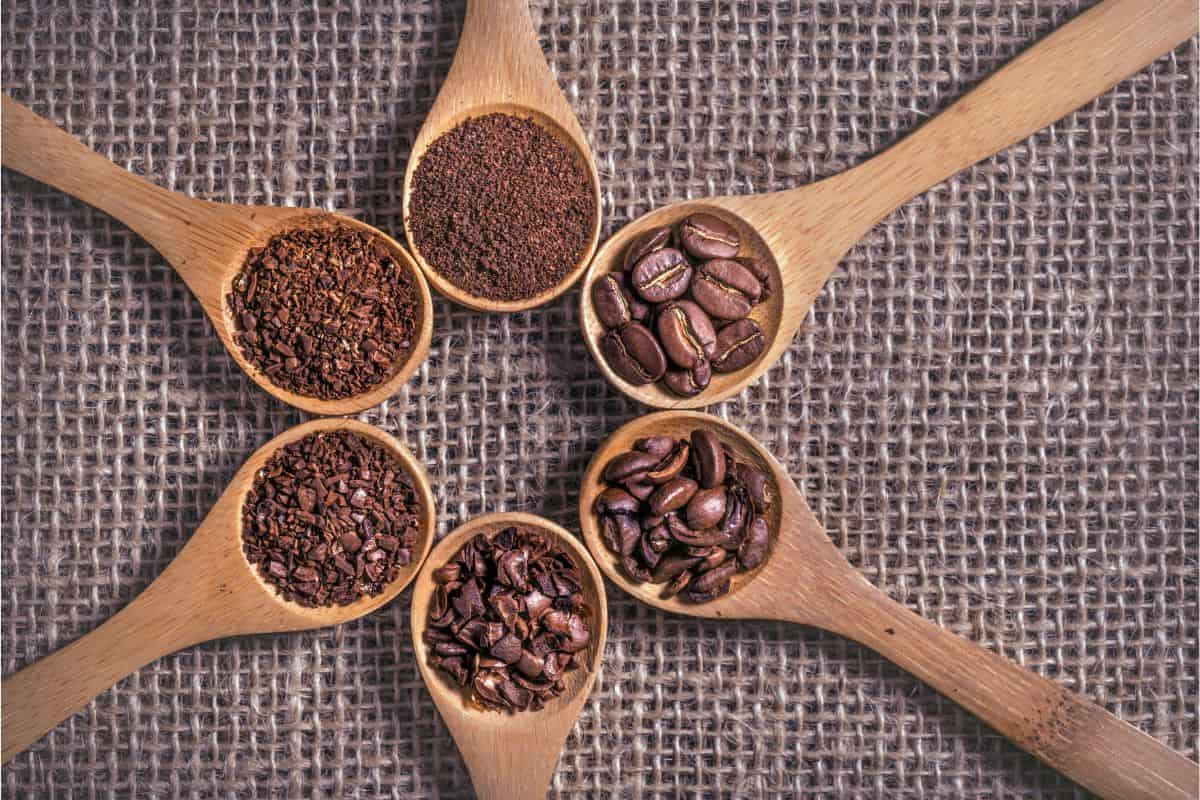
French Press Grind Size Should Be Coarse and Consistent
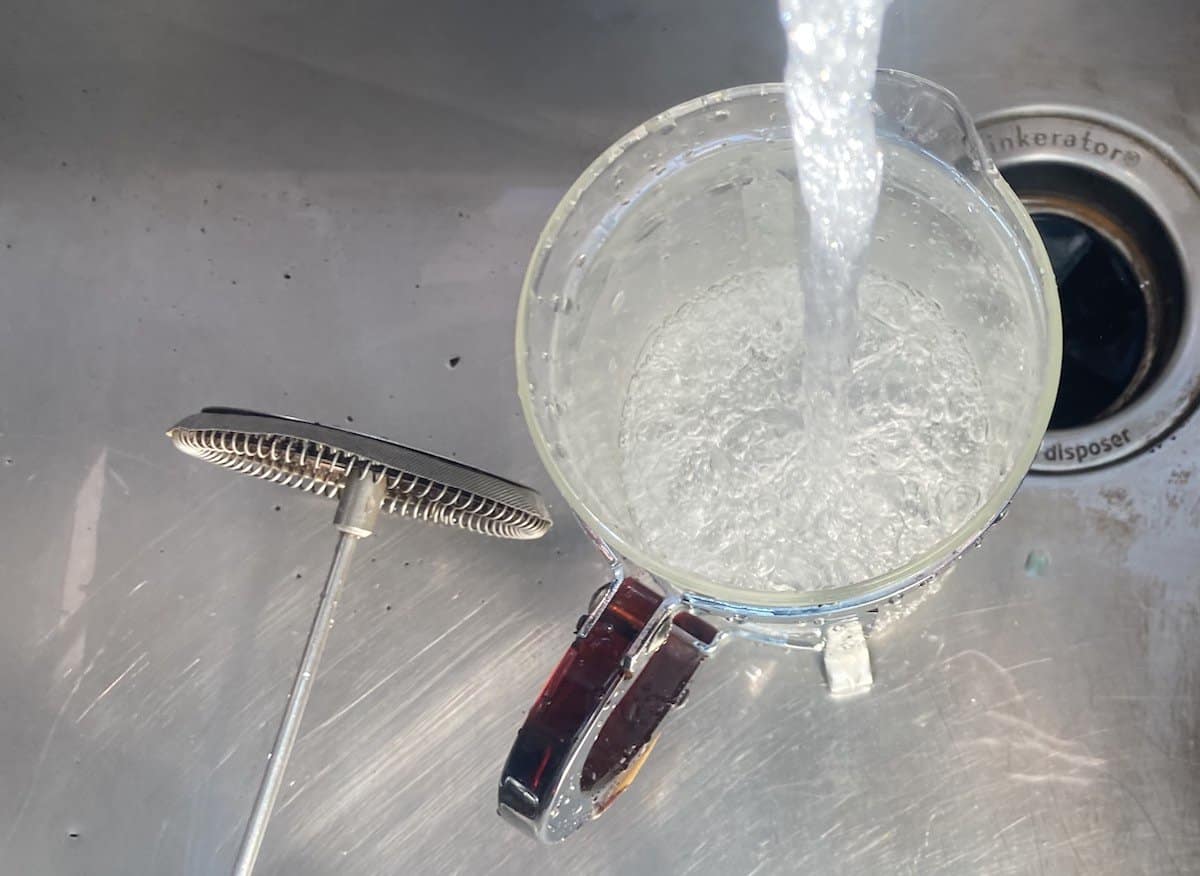
How To Clean a French Press: 3 Easy Methods
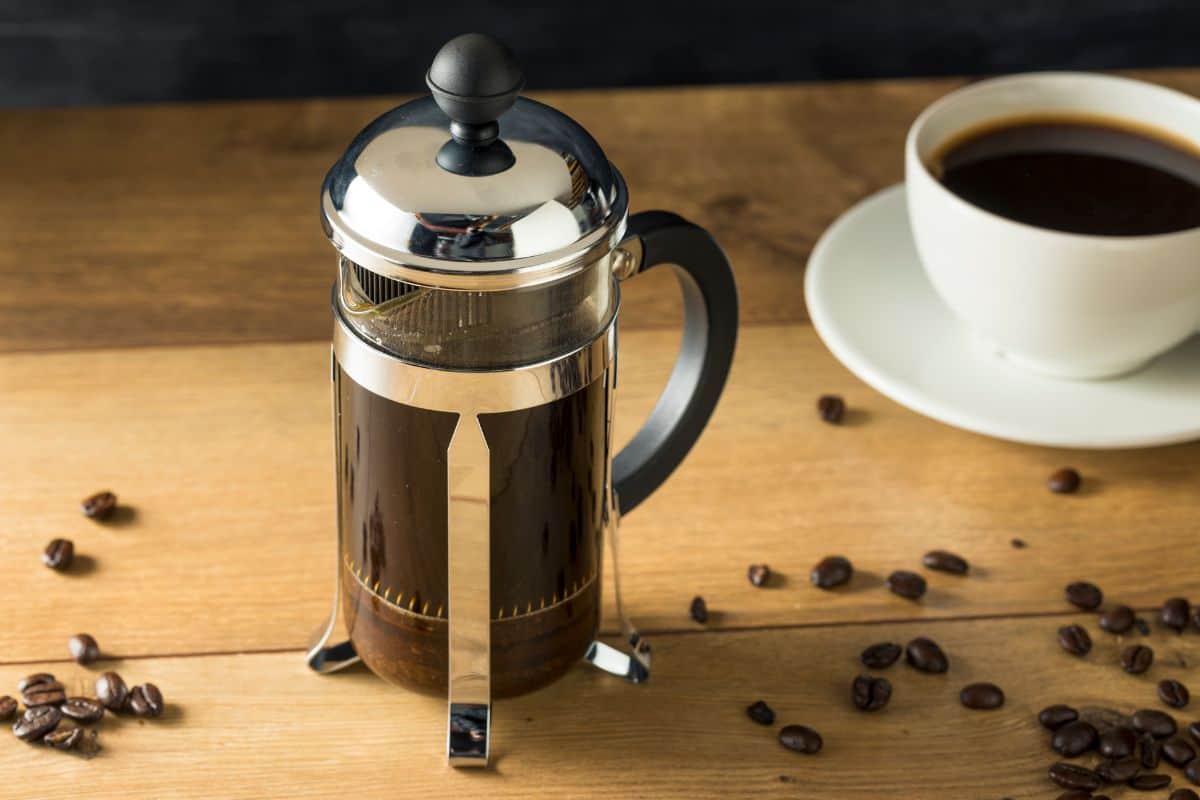
How Long To Steep French Press: The Ideal Brew Time
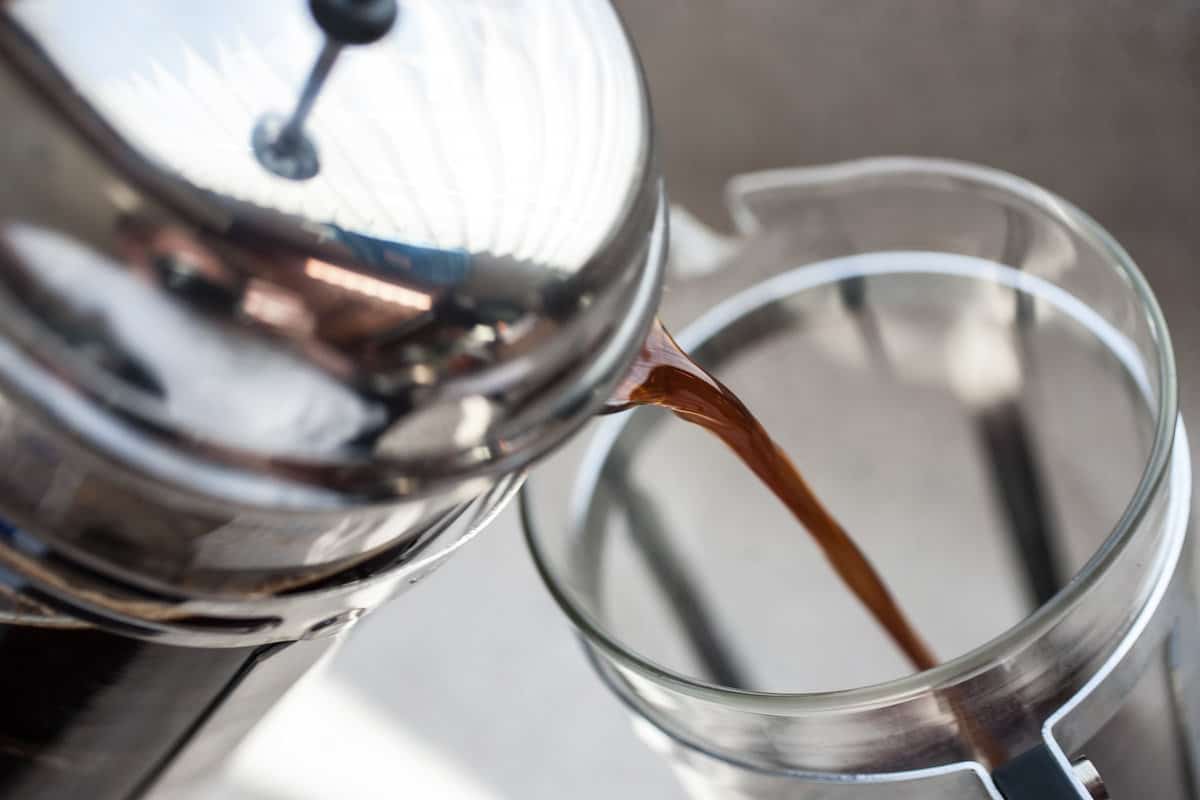
Your French Press Provides An Easy Way To Make Cold Brew
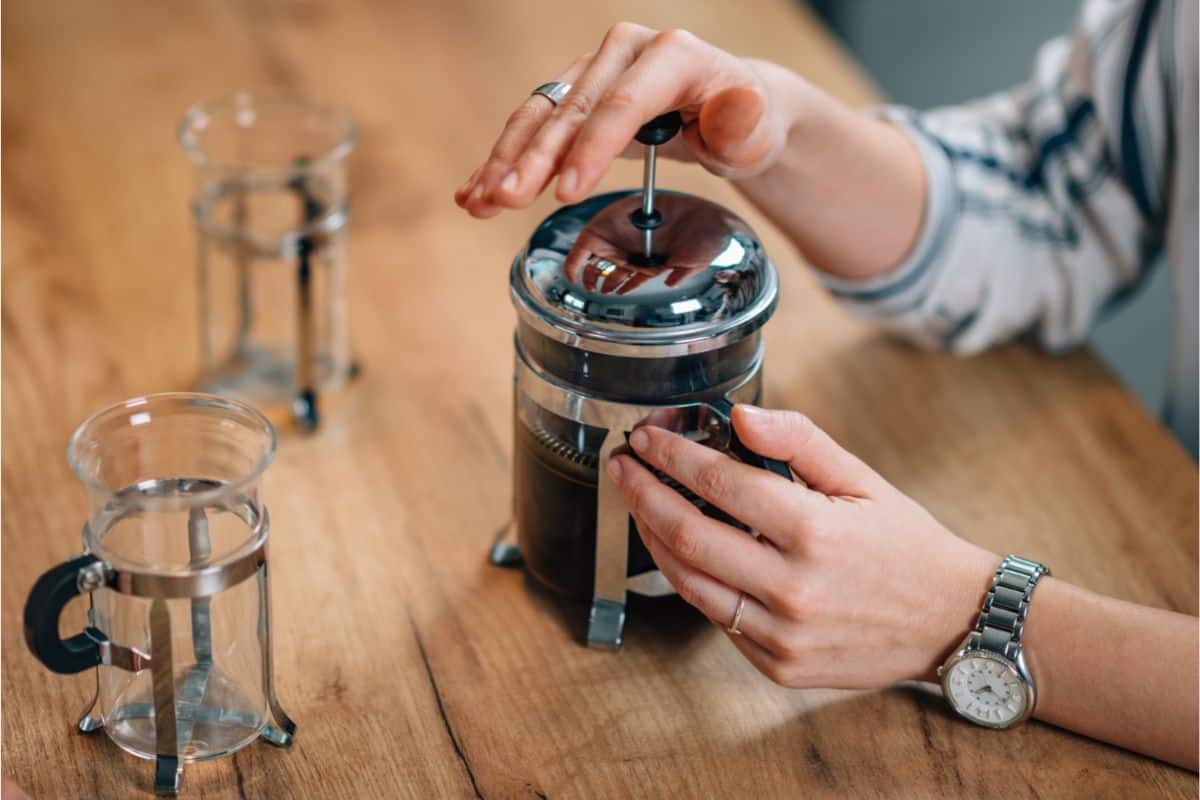
How to Use Fine Ground Coffee in a French Press
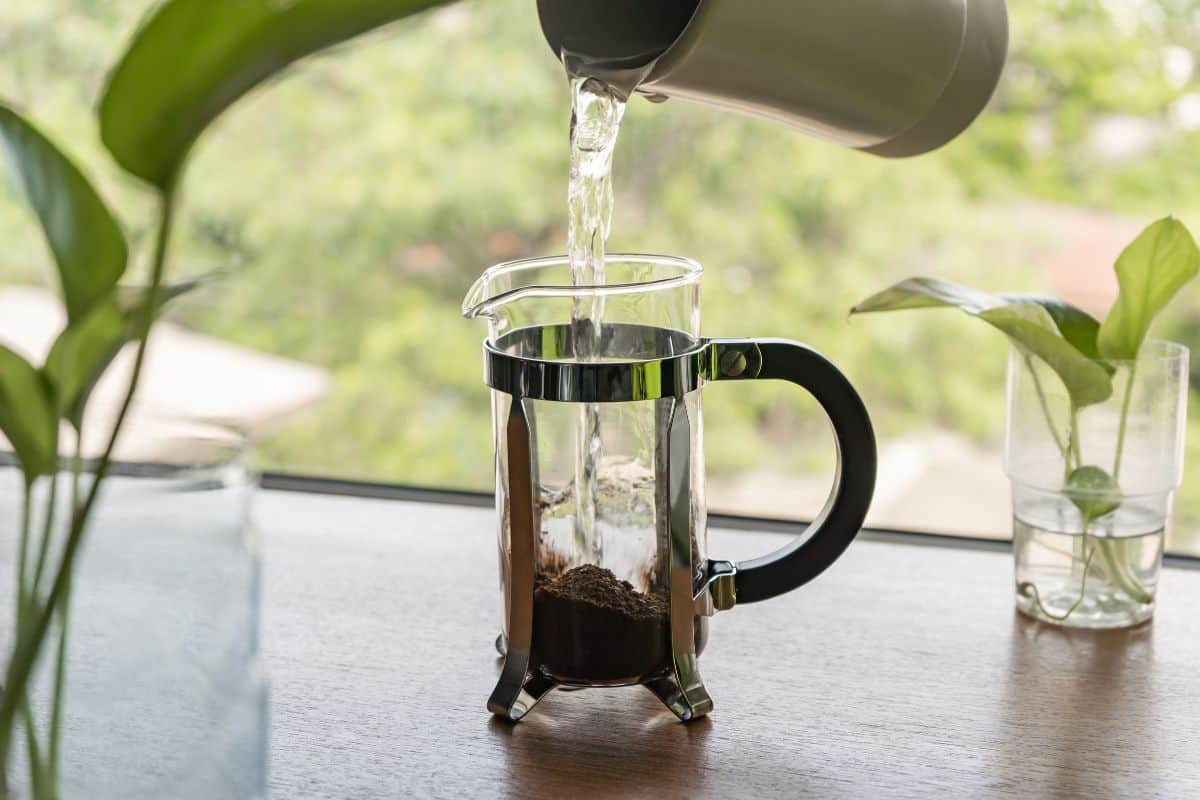
The Correct French Press Water Temperature is Simple to Achieve
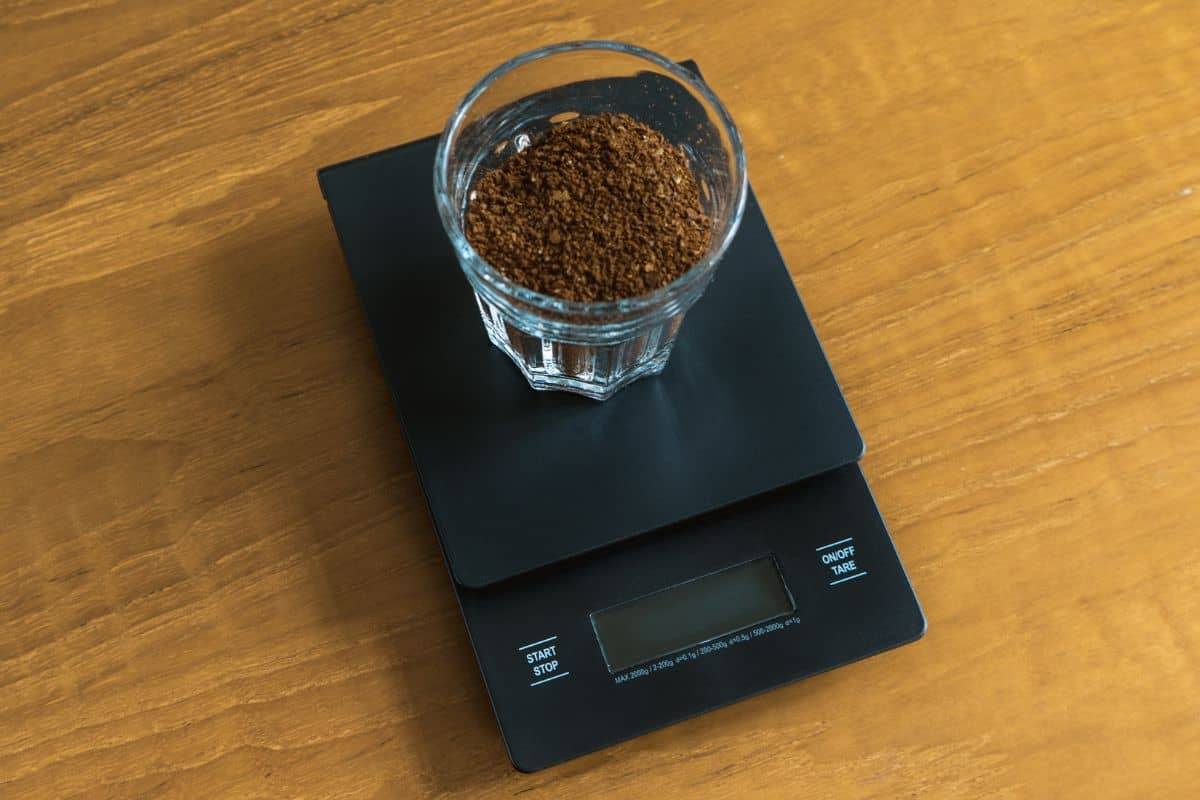
The French Press Ratio You Should Be Aiming For
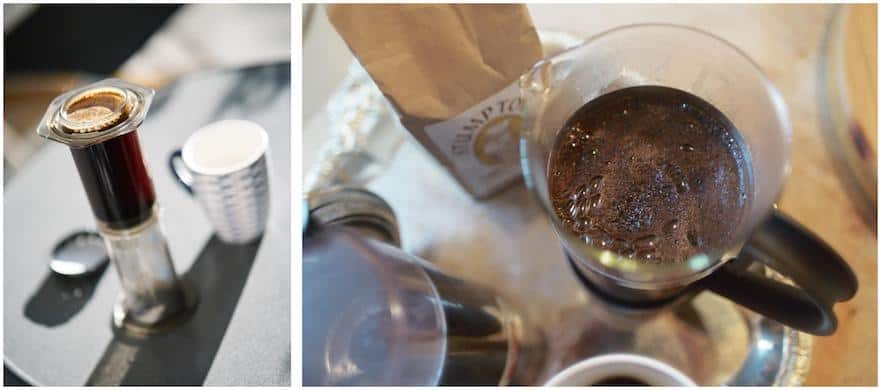
The AeroPress and French Press Are Less Alike Than You Think
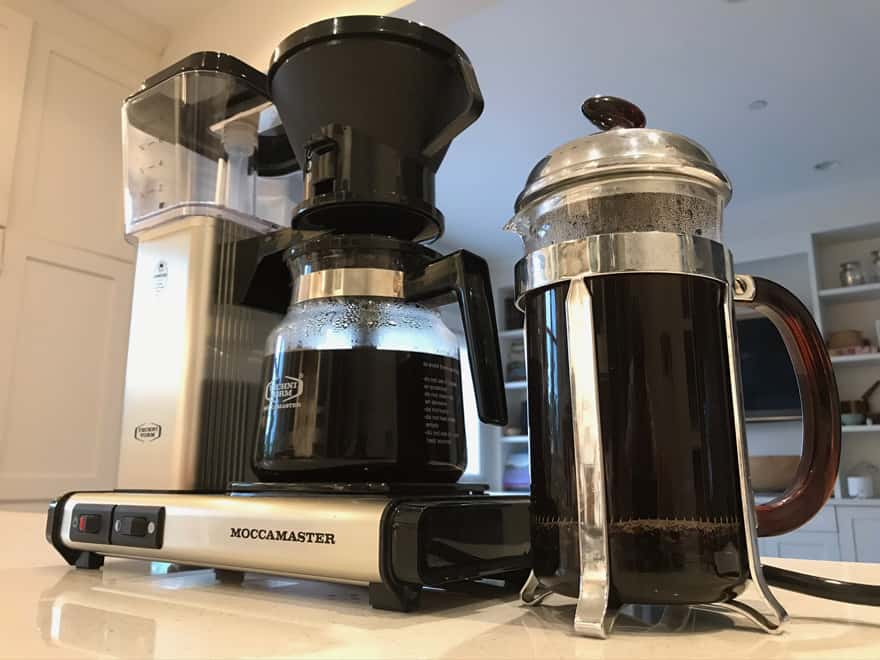
Drip Coffee vs. French Press as an Everyday Brewing Method
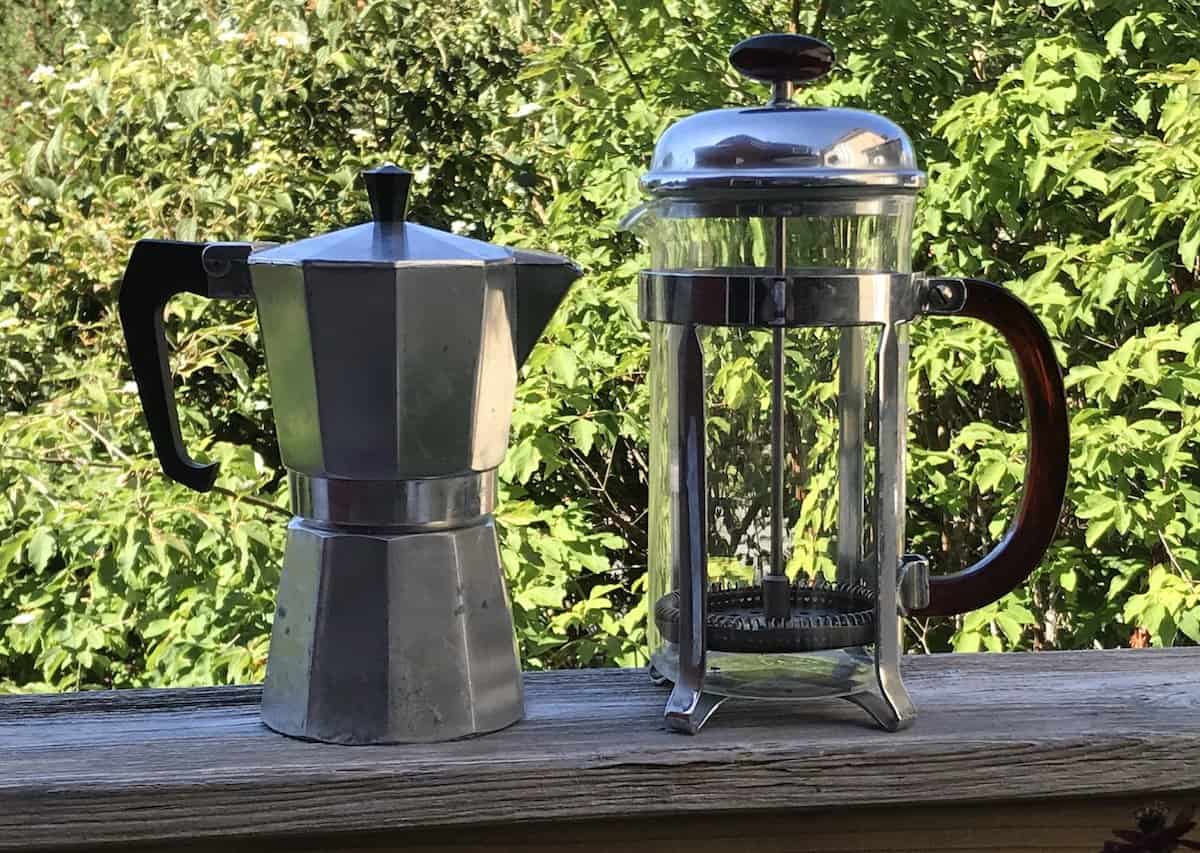
Moka Pot And French Press Are Two Wildly Different Brewers


